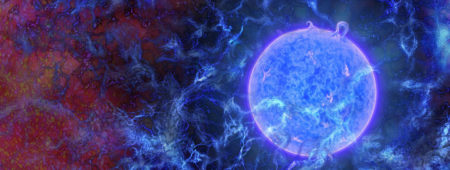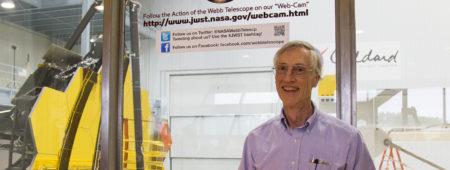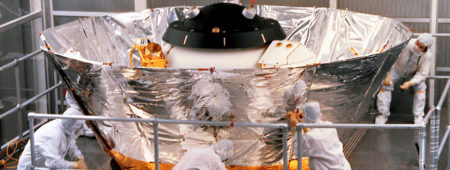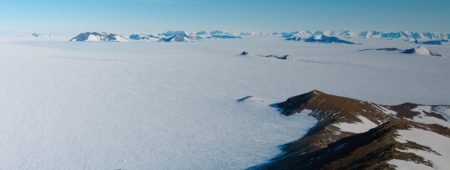
Mapping the History of the Universe

Where did we come from? Nobel laureate and Hertz Fellow John Mather has devoted his entire career to answering this question.
Now a senior project scientist at NASA, Mather began a quest to understand the origins of the universe in graduate school at the University of California, Berkeley, in the early 1970s.
At the time, researchers believed that the cosmos had expanded from a minuscule dense collection of energy, known as the Big Bang, which led to the universe as we know it. That bang, they theorized, left a remnant of particles and radiation in space known as cosmic microwave background that, if definitively measured, could prove the theory as true. But uncertainty was pervasive.

“We didn’t know what it was, or whether it would have the properties to explain the universe we live in. Our job was to find out more about it, and as much as possible,” Mather said.
His groundbreaking work—research that confirmed the Big Bang Theory, revolutionized our understanding of the early cosmos, and earned him and fellow principal investigator George Smoot the Nobel Prize—evolved from an experience that might have prevented a less courageous person from pushing forward: failure.
From Failure, Greater Ambition
Cosmic microwave background was detected in 1964. Mather's graduate thesis project, supported by a Hertz Fellowship, was an attempt to measure it using a balloon-borne instrument.
Ultimately flawed, the instrument failed to function properly after launch—and not just due to one flaw, but for three different reasons.
“The awful feeling these failures produced stayed with me for the rest of my life, and it was one of those ways of learning what one does not want to learn,” Mather says in Find Your Path: Unconventional Lessons from 36 Leading Scientists and Engineers, by Hertz Fellow Daniel Goodman.
Mather salvaged his thesis by focusing on the project’s ground-based work and instrument design, while his project collaborators eventually fixed the issues and achieved successful flight.
When NASA issued a call for satellite missions in 1974, Mather, then a postdoctoral fellow at the Goddard Space Flight Center, was buoyed enough by his colleagues’ success to put forth the project once again. In collaboration with six colleagues, he submitted a more ambitious proposal that built on the original.
To his surprise, NASA decided to explore the concept, and the Cosmic Background Explorer Satellite (COBE) project was born. Mather and the COBE team used the satellite to measure the heat radiation from the Big Bang, giving the world its first precision, all-sky map of the cosmic microwave background in 1992.
“We measured the color. It's exactly as it should be if it’s from the Big Bang, which is to say, it has no color,” Mather said. “And it also does have hot and cold spots, which are responsible for our existence.”

A New Era of Precision
The COBE mission ushered cosmologists into a new era of precision measurements.
The preciseness helped eliminate erroneous theories about the Big Bang. The mission also paved the way for deeper exploration of the microwave background, first by NASA’s Wilkinson Microwave Anisotropy Probe mission and most recently by the European Space Agency’s Planck mission.
In 2018, the Planck mission measured the cosmic microwave background to an unprecedented accuracy, providing the most detailed image yet of the universe as it appeared in its early history, just 380,000 years after the Big Bang.
In 2008, John Mather announced the endowment of a Hertz Fellowship using his award from the 2006 Nobel Prize in Physics. The Jane and John Mather Fellowship supports cosmologists and applied scientists in their research quests for innovations that will change our world for the better.

